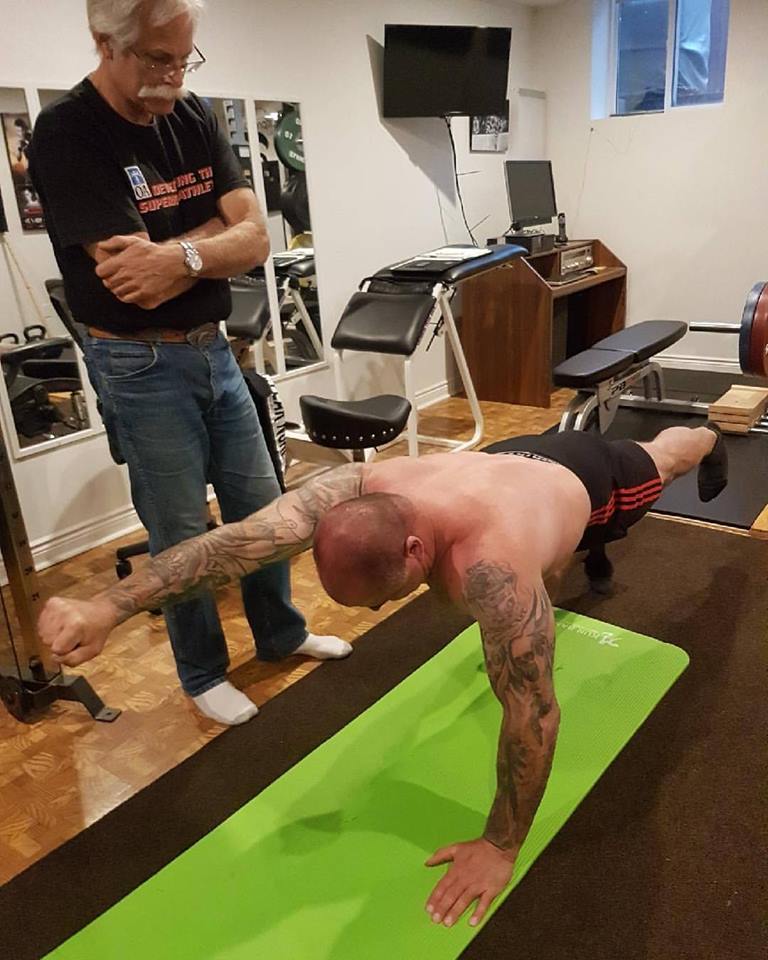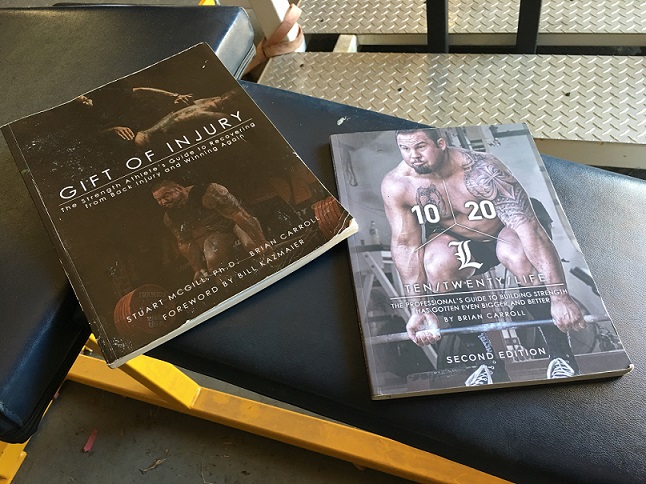
29 Apr The Purpose Behind Prehab
At Team PRS we stress the 10/20/Life Warm Up and doing your individual prehab exercises as a non-negotiable part of starting your workout. The prehab, warm up, and rehab if you need it, can be very effective, or very ineffective depending on how much effort you’re putting into it.
I remember when I first started working with Brian Carroll and I told another gym friend I was doing the 10/20/Life program. He said he had tried it out as well, but got sick of doing bird dogs because he didn’t feel like they did anything. It’s not very hard to go on hands and knees and extend one arm and one leg. It’s also not that hard to do a plank from side to side or do a half crunch and hold it for 10 seconds. Other commonly seen warmups like walking side to side with a band around your knees, doing dead bugs, and lots of variations of different core type movements aren’t very challenging if you go through the motions. The key part being “go through the motions.” You’ve gotta have a purpose behind your prehab!
If you want any of these exercises you’re doing to actually help, you’ll need to work for it. First, you need to know what you’re trying to accomplish with each exercise. When you’re doing banded side-walks, don’t squat down and move side to side, be deliberate with each step. Put one foot out, plant it in the ground, grip the ground with your feet and toes so that everything from your foot up to your glutes comes alive and engages, and then bring the other foot over. Do it slow and don’t rush it. The idea is to build coordination and stability, not just make your buns burn. The bird dog is probably the easiest one to mistake for being very basic when there’s a lot going on. You’re pushing into the ground with your down hand and foot, creating stability and gripping the floor at the same time with both, working your serratus, lats and various core muscles from both sides. Up top, you’re extending one arm up and getting some good mobility through the thoracic spine, while kicking out firmly with your back leg and keeping the spine from hyperextending while working your glute and hamstring. You’re getting all the criss-cross, multi-directional, stability and mobility goodness that core work demands, and most people don’t even know it.
The McGill crunch is the same way. The purpose is to train your rib cage to be able to lock down, while stiffening the rest of your trunk through the lower abs, hips flexors and legs with the leg that’s extended. Especially with squatting we have a significant tendency to over arch and put stress on the lower spine by flaring the ribs upwards. Mastering the crunch will alleviate that. We can move on to any host of different exercises and how useful they could be, but people miss out on so much. Almost all thoracic mobility exercises will have someone jutting their head forward or splaying their ribs to get the amount of mobility they want out of their shoulders. KB carries just walked up and down, instead of practicing posture and balance that could add to their effectiveness. Planks will almost always fall short of their potential because people think it’s just an ab exercise and not something that strengthens your serratus, lats and back because you have to stabilize while your shoulders spread open….I bet pushups could do 10x more than most people use them for if they were conscious of all the stuff going on when they push up and down.
Back to my point – there’s a purpose behind what you’re doing and the exercises you’ve been assigned by a PT, or the exercises that you’ve heard are so helpful from books, or online. Pay attention from the minute you begin the exercises to when you end it and think about what’s going on everywhere, from the grip of your foot and arch into the ground, to the position of your ribcage, to the angle of your head and neck and so on. Giving attention to the little exercises that help keep us healthy is as important as the big exercises that we train to improve. Just like a big tall tree is impressive on the outside to look at, it’s got an equally remarkable root system below that nourishes it and keeps it from falling over under its immense size. Think of your prehab as growing your roots down into the ground, so that your strength won’t topple you in your prime.
Want to learn about prehab and rehab for back pain? Pick up a book combo and choose from; Gift of Injury, Back Mechanic, 10/20/Life, or Ultimate Back Fitness and Performance all at PowerRackStrength.com.
Latest posts by Tucker Loken (see all)
- Tucker: Another Normal Log Update - March 1, 2019
- Tucker: A Normal Log Update - February 16, 2019
- Tucker: Making Do - February 4, 2019








Sorry, the comment form is closed at this time.